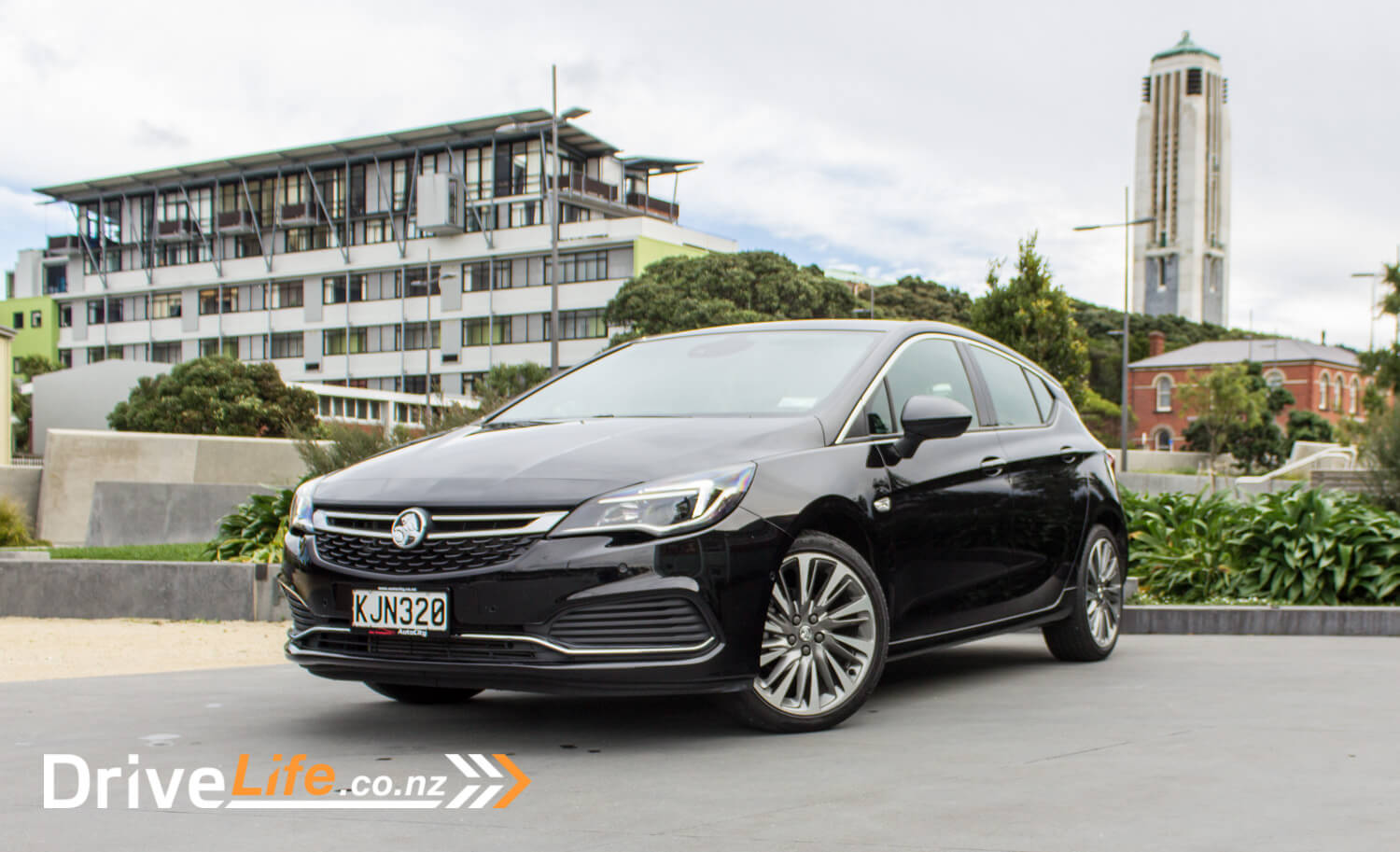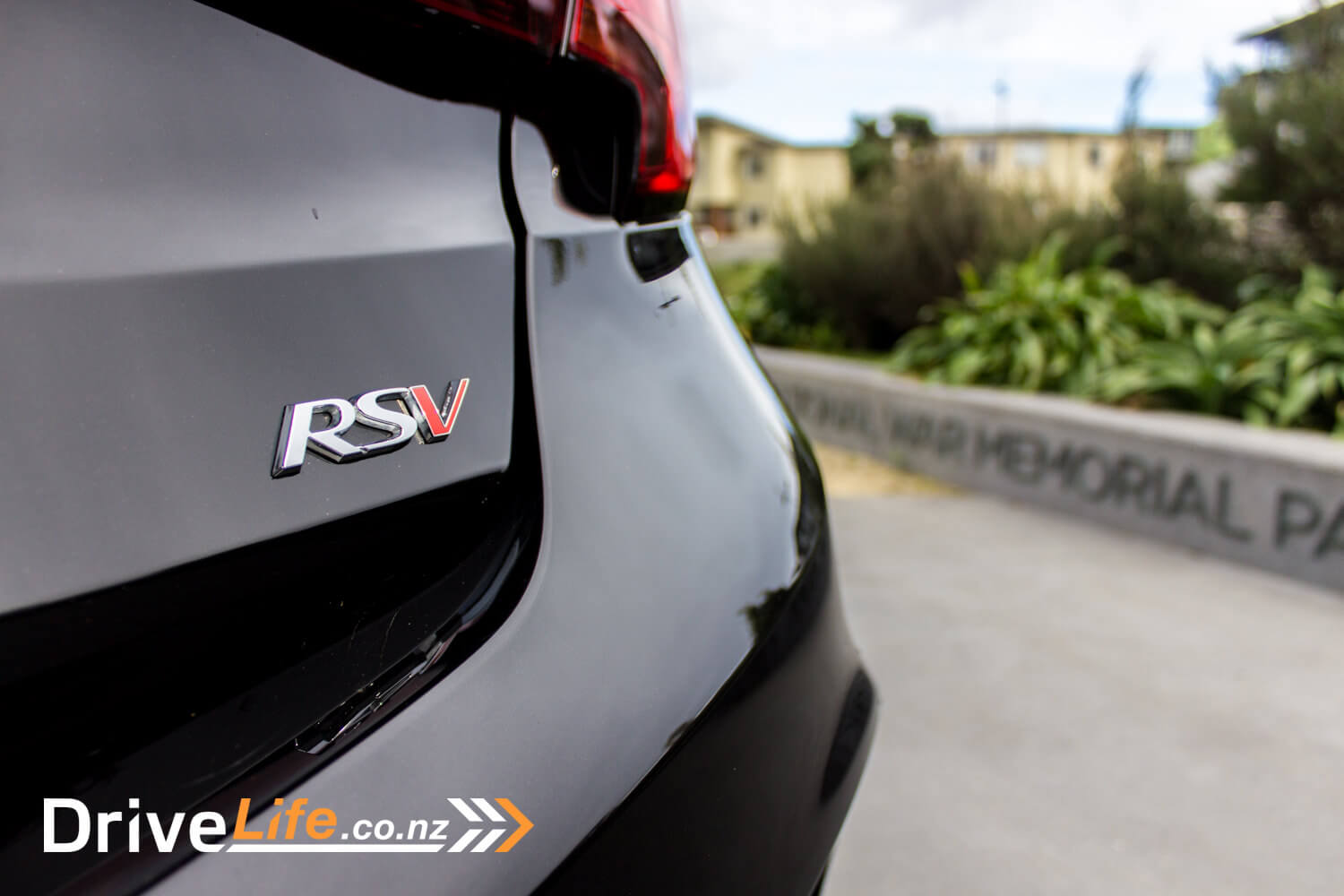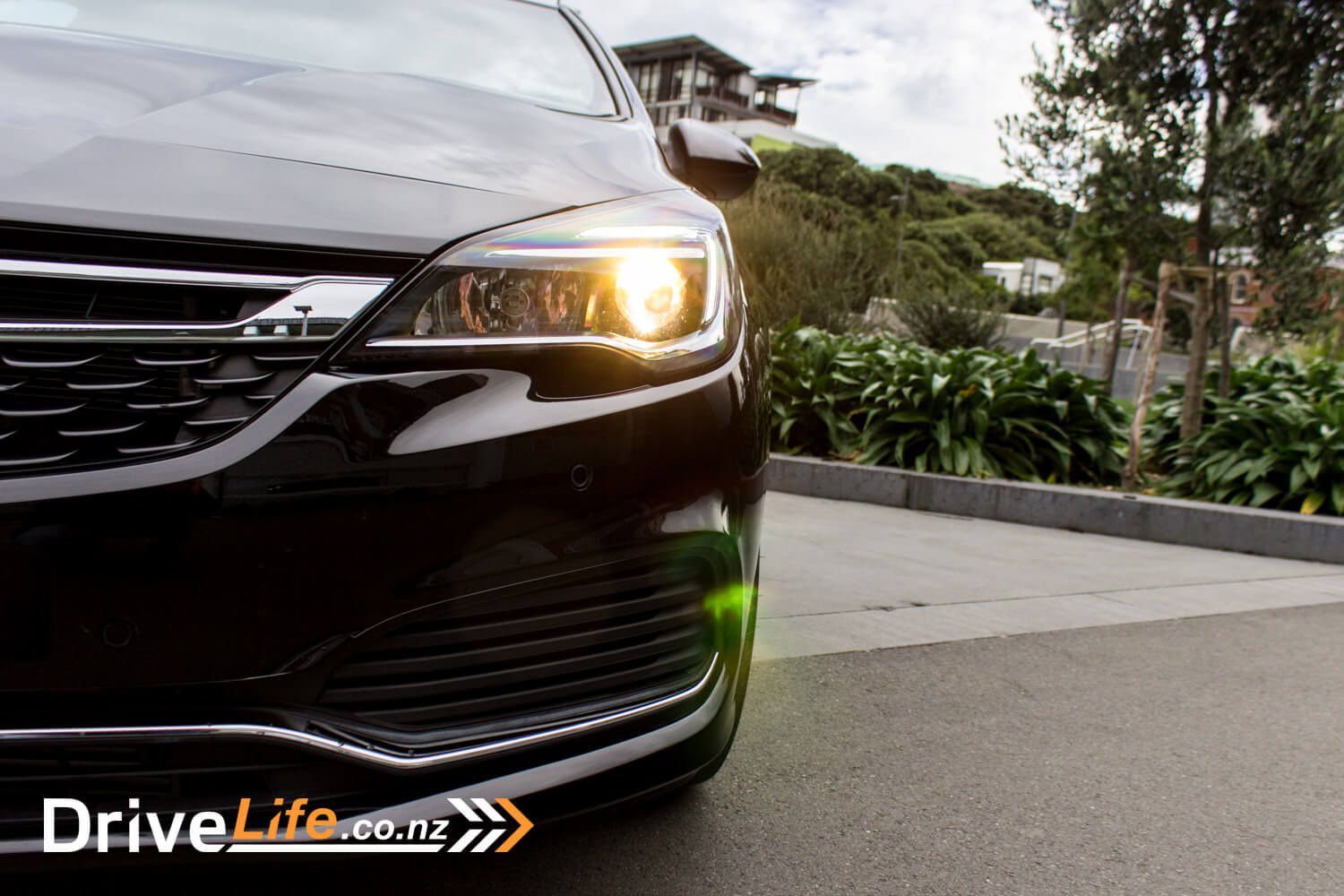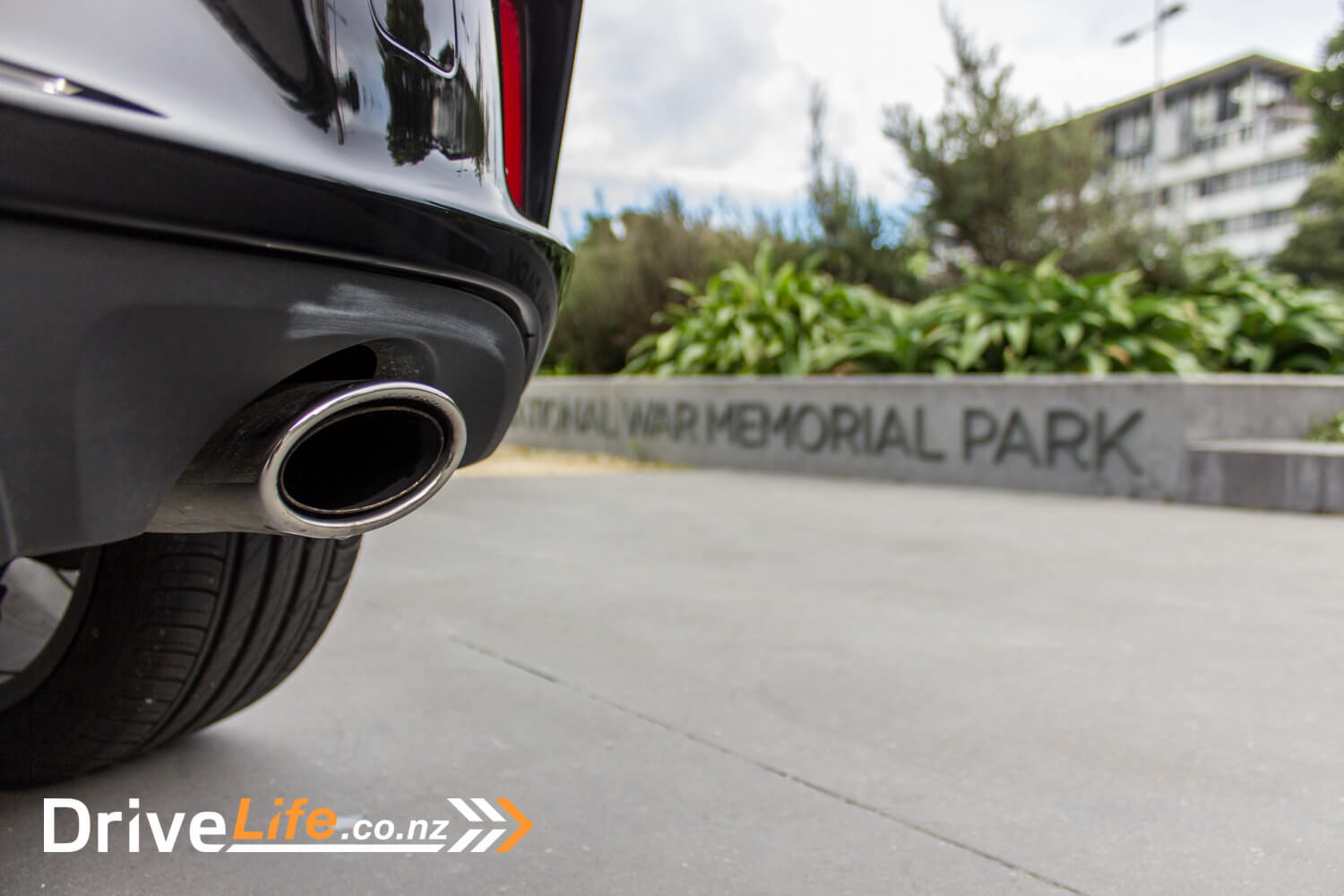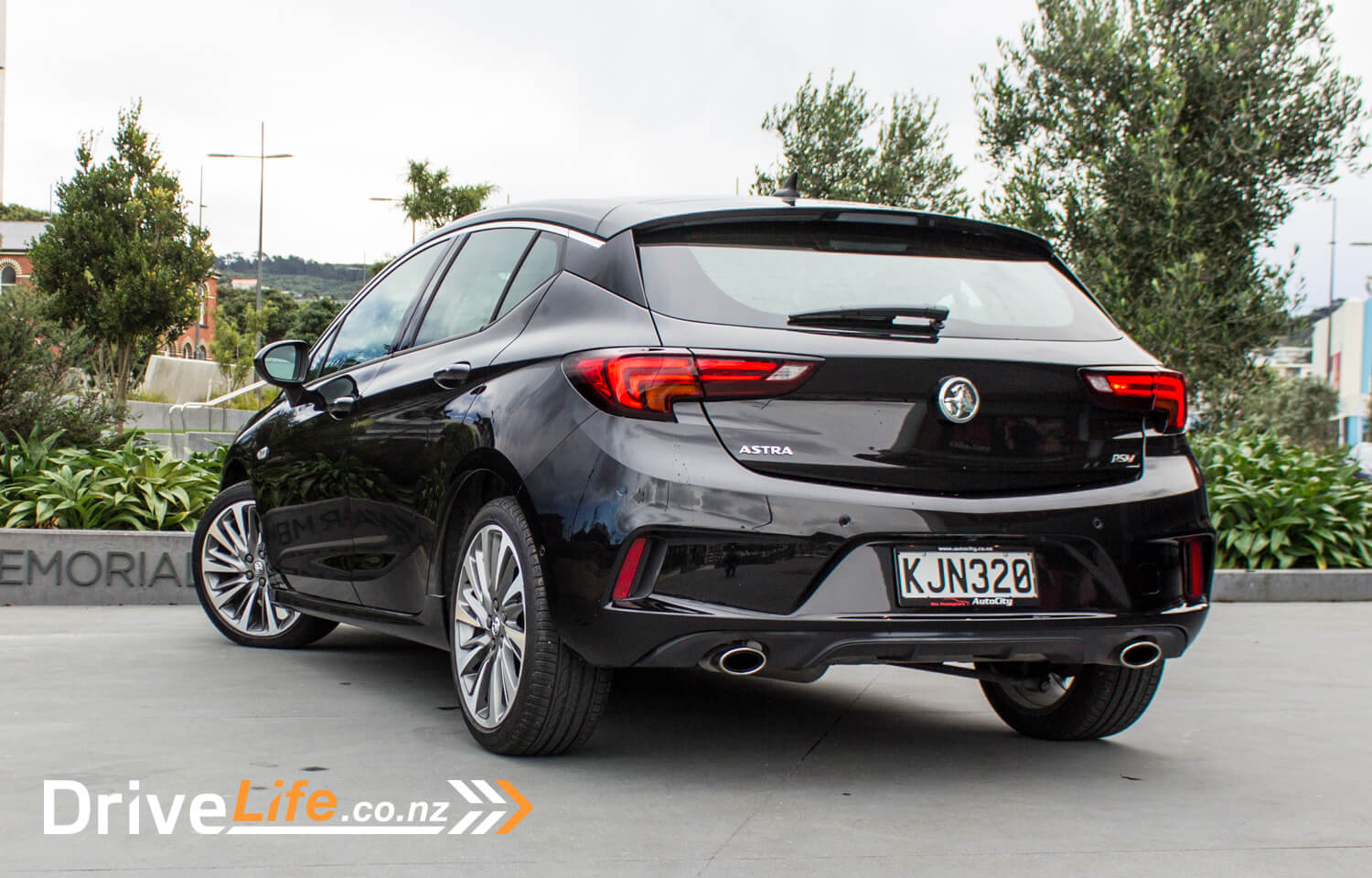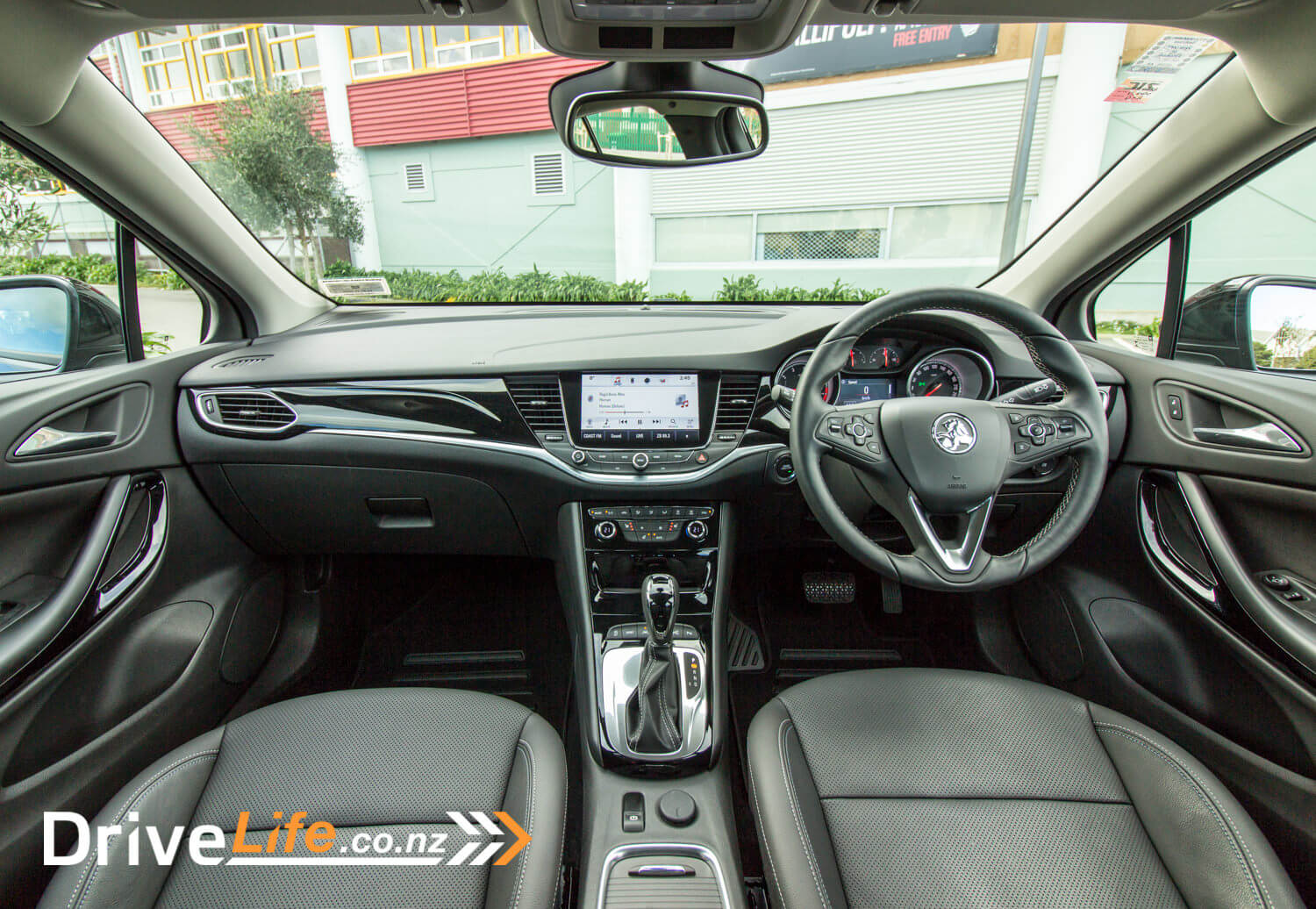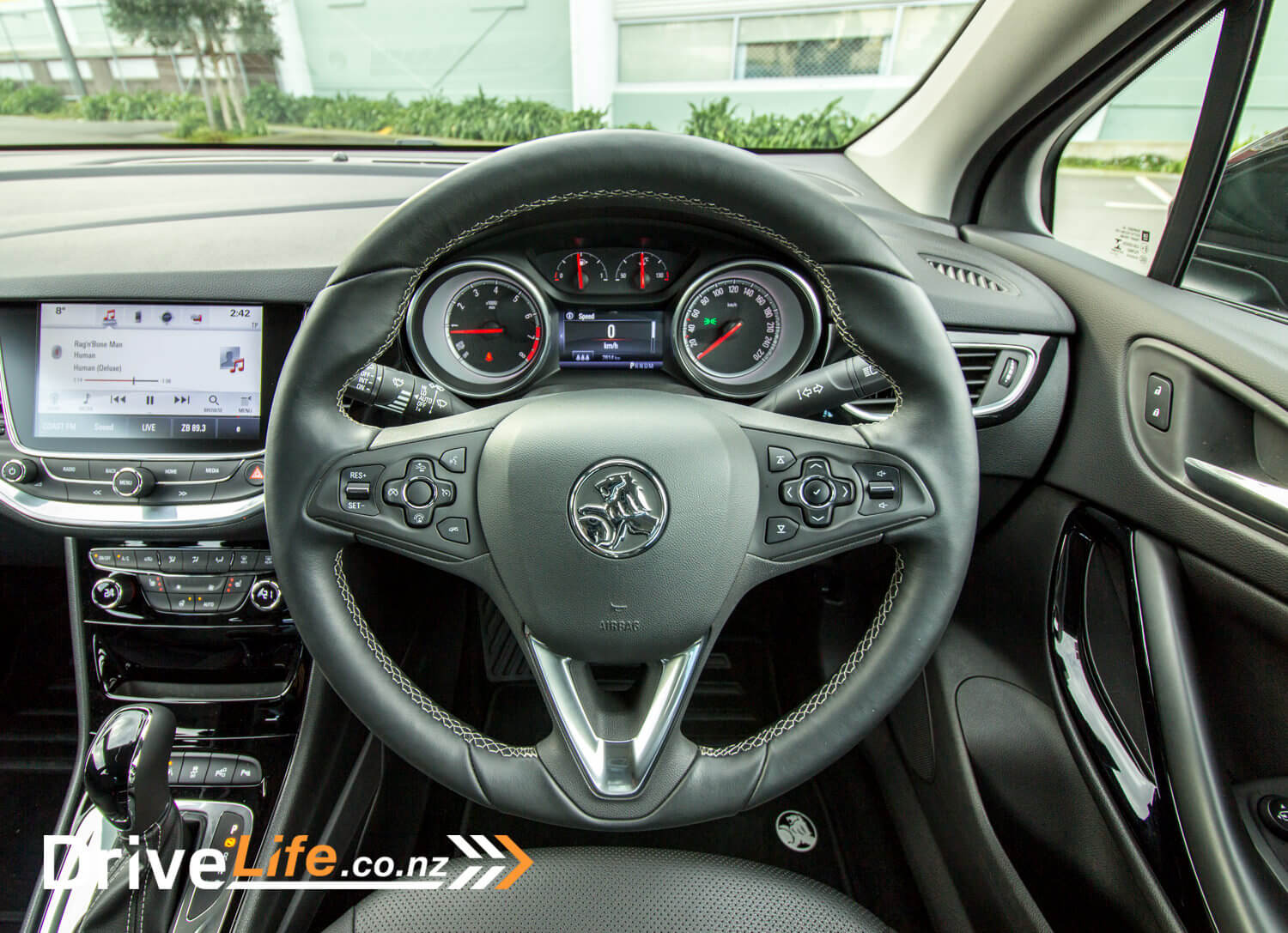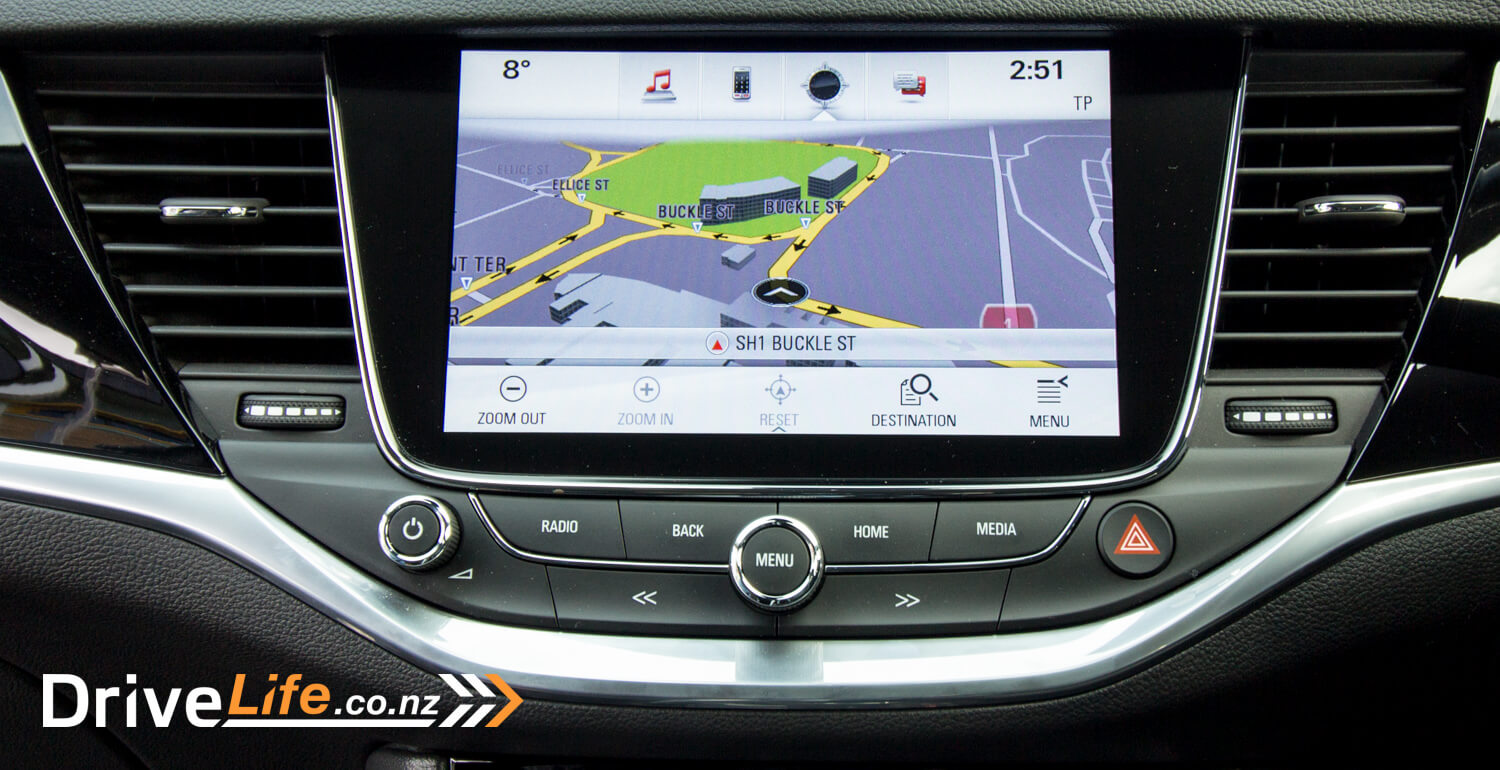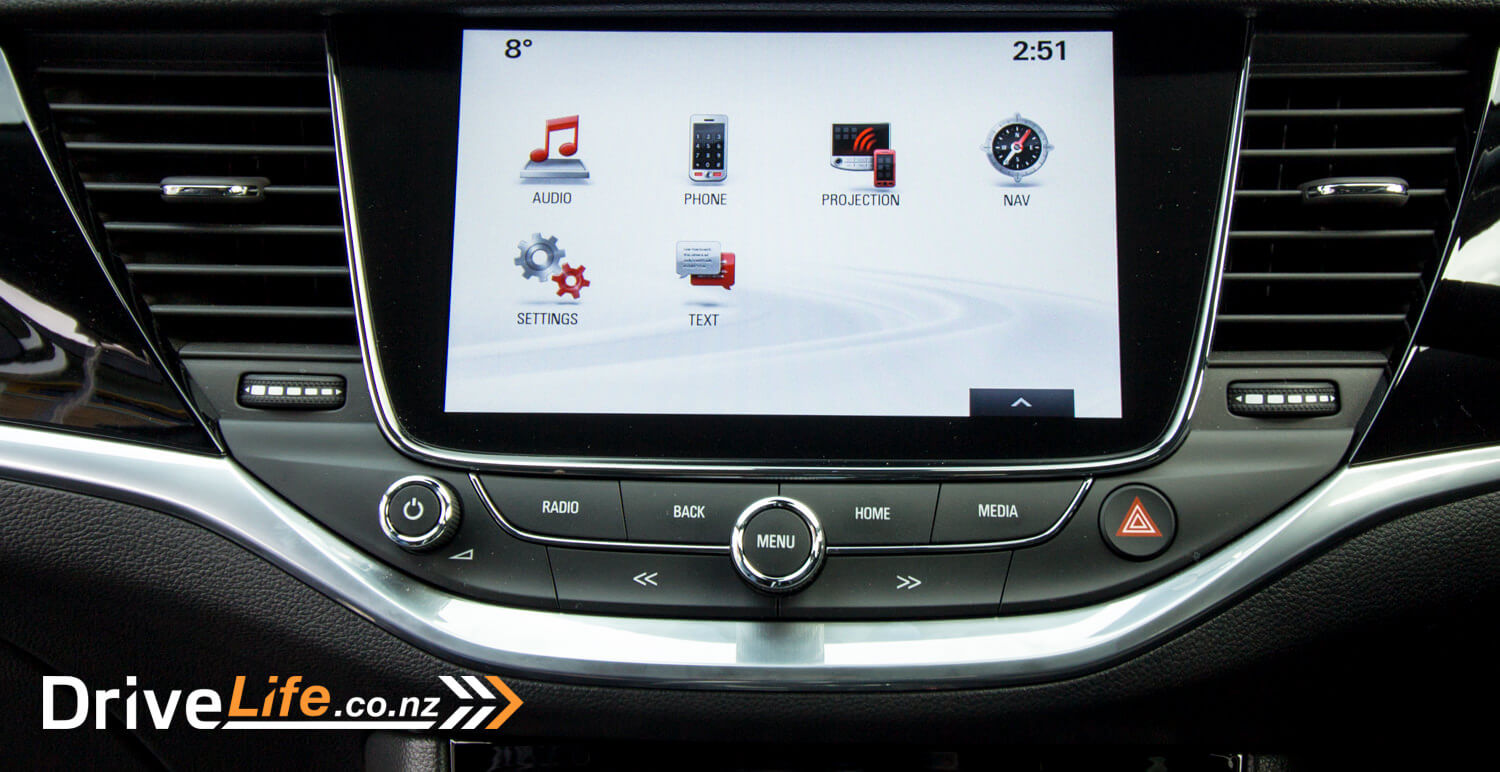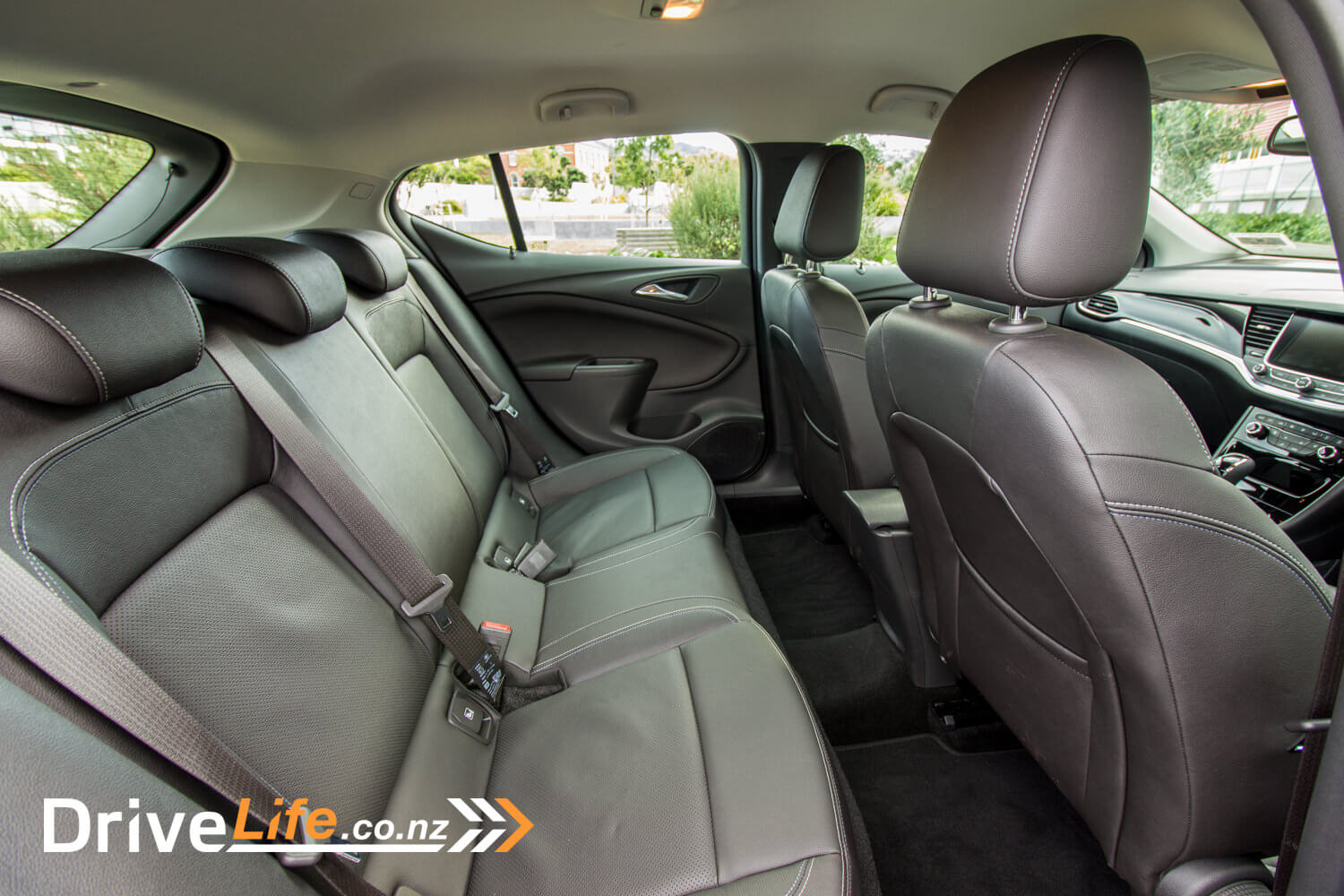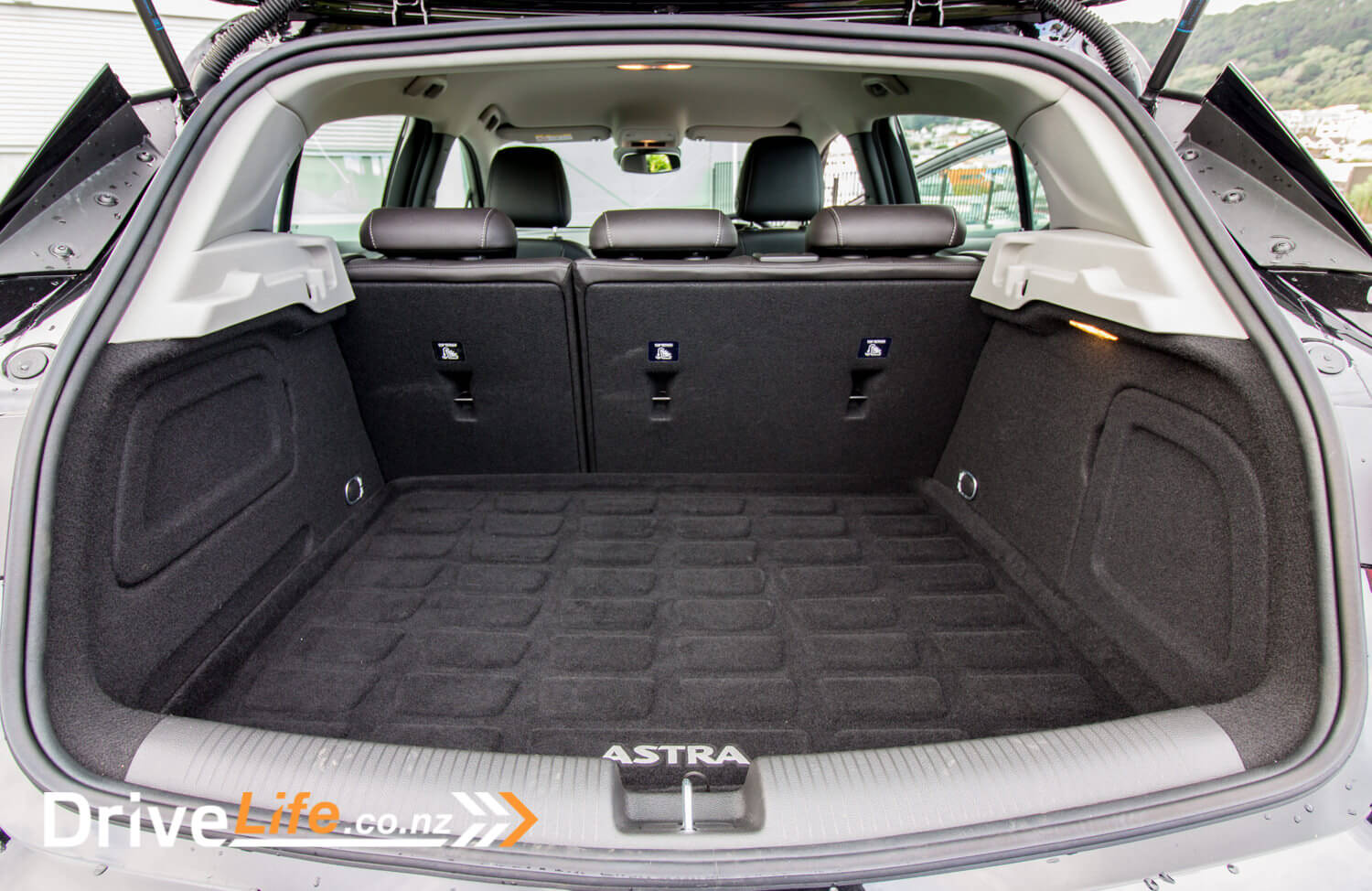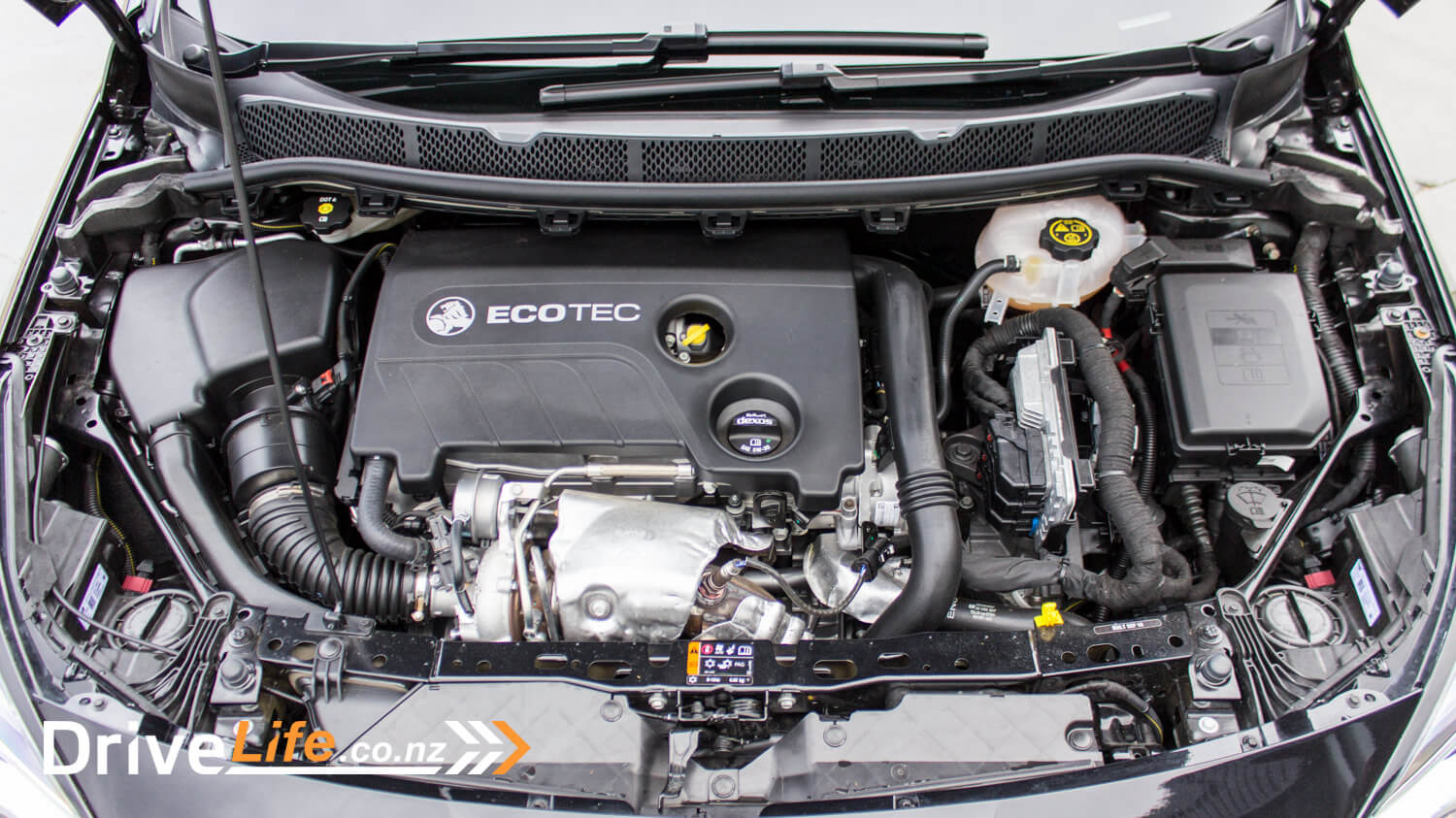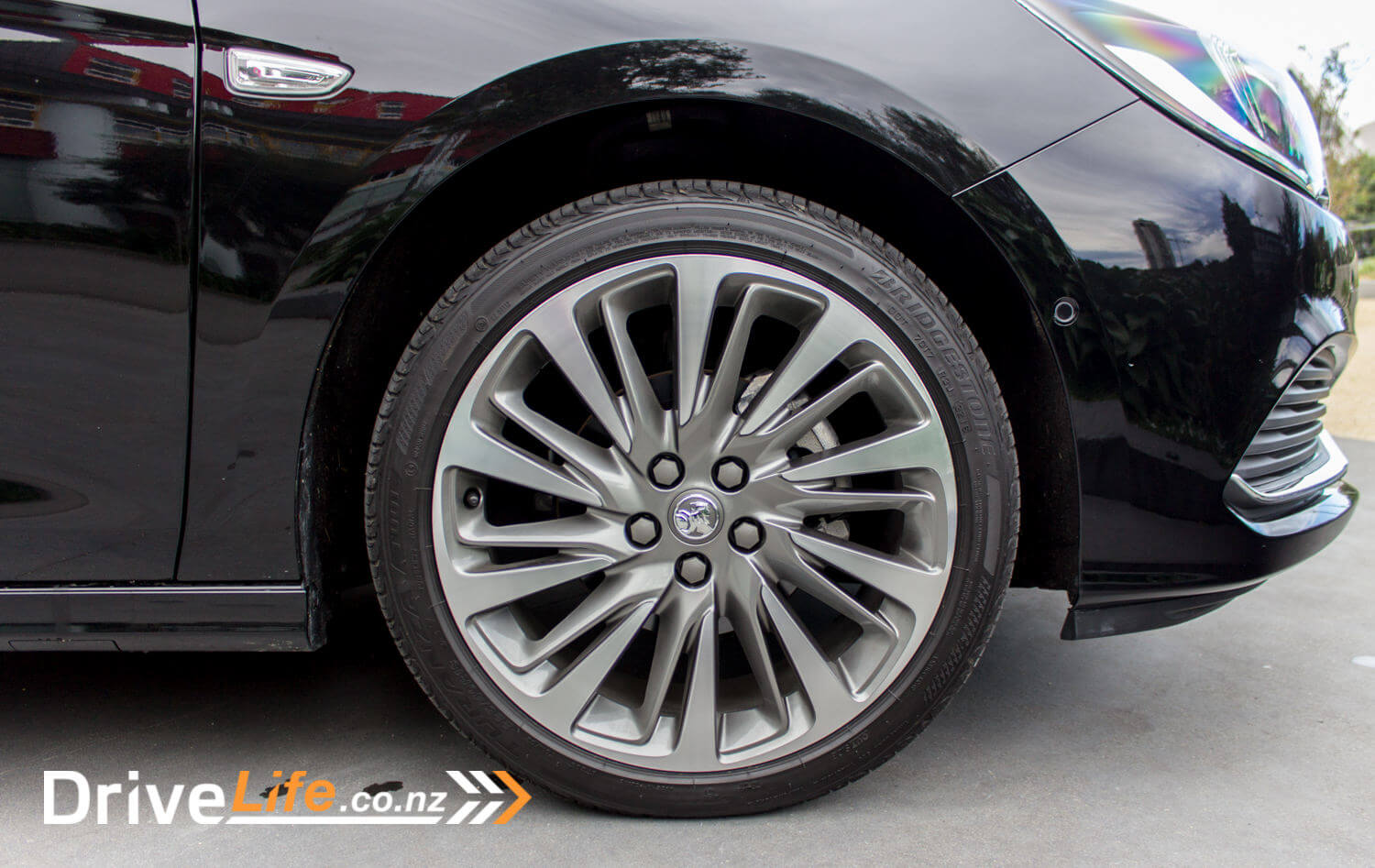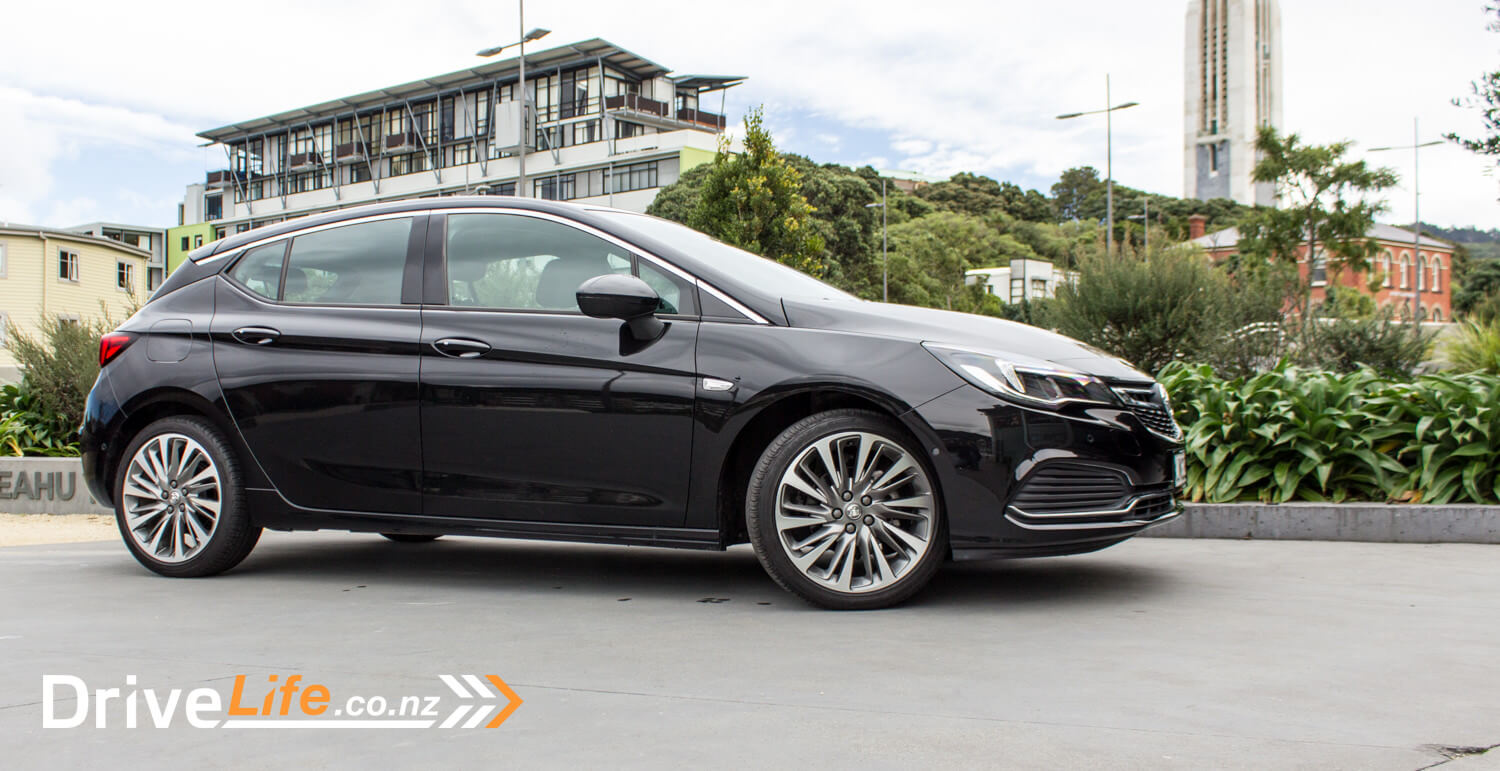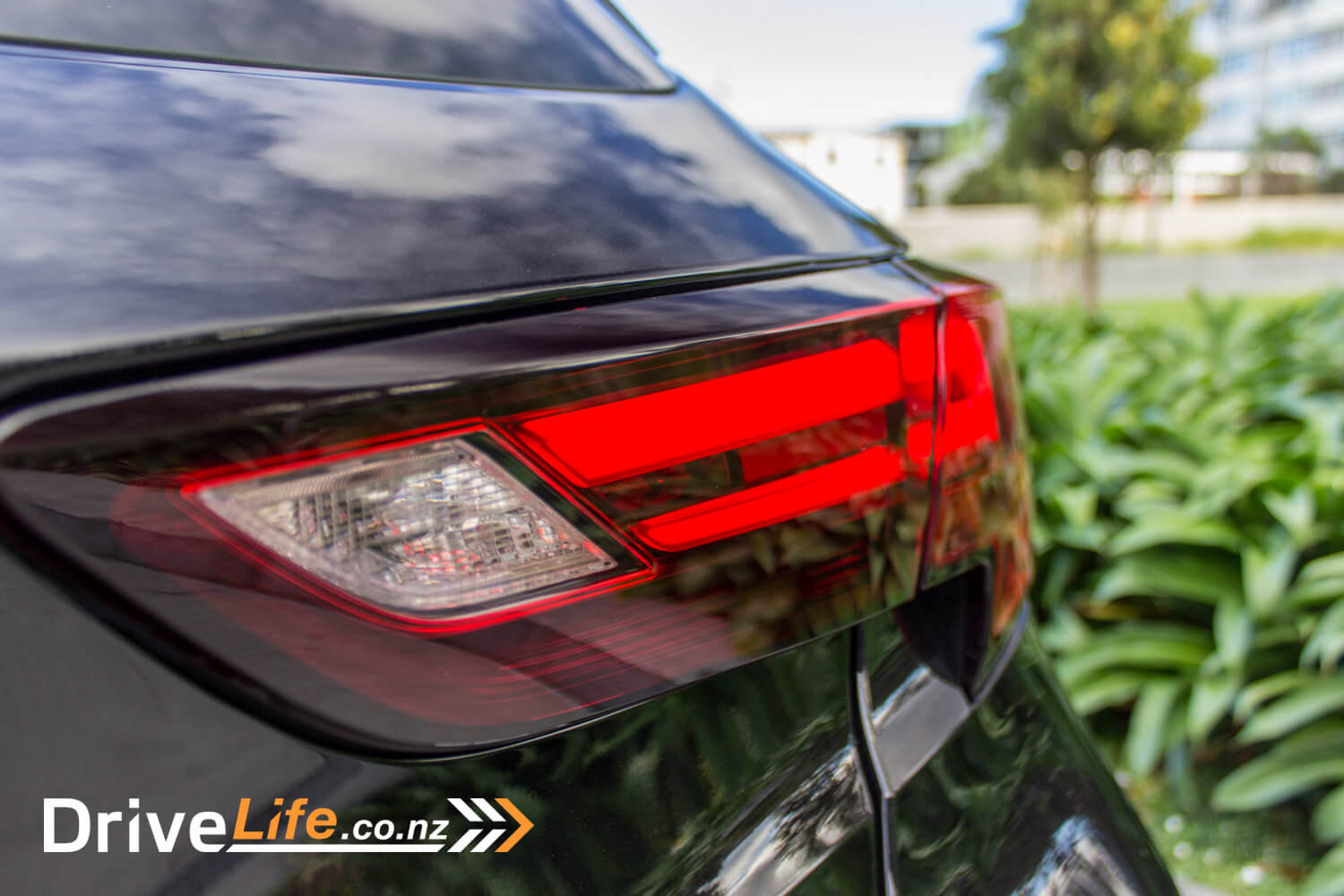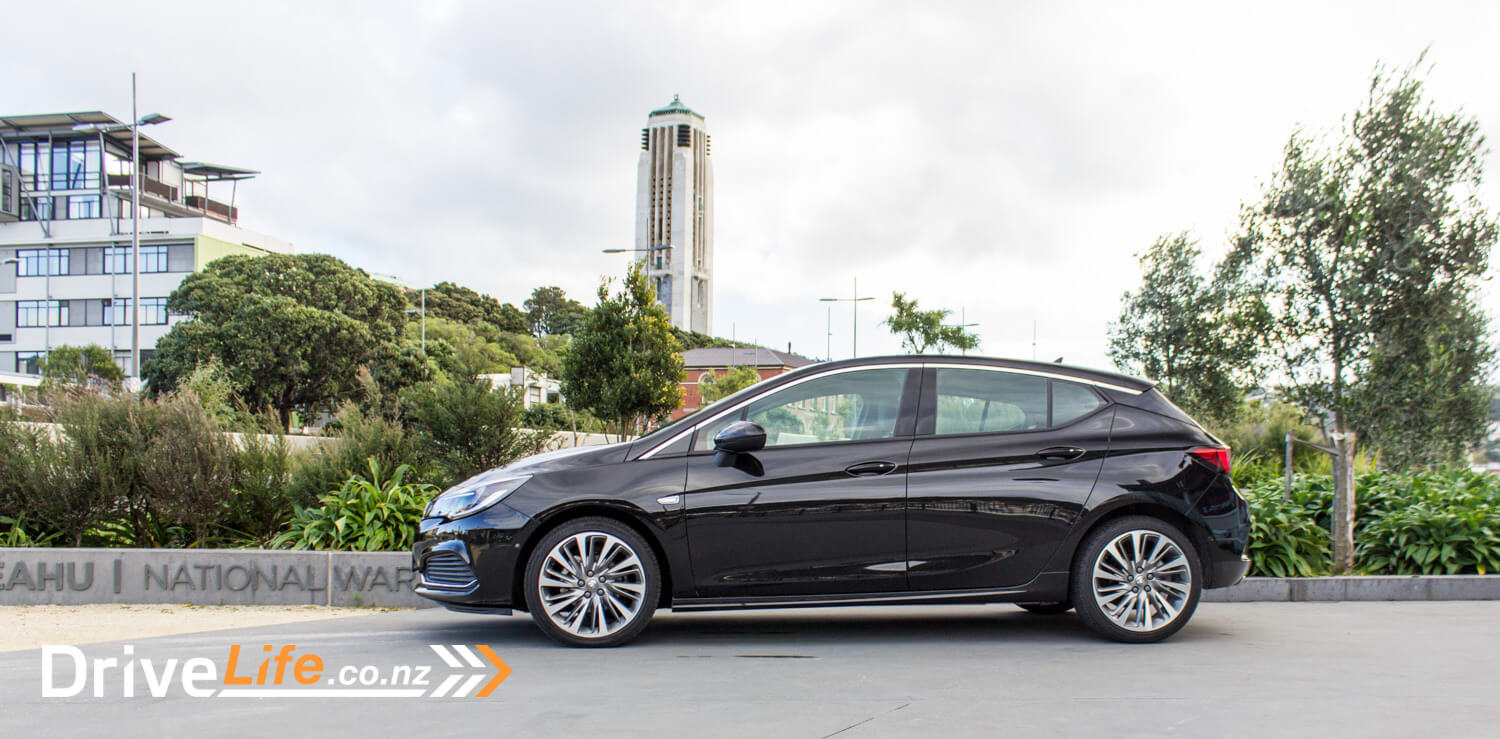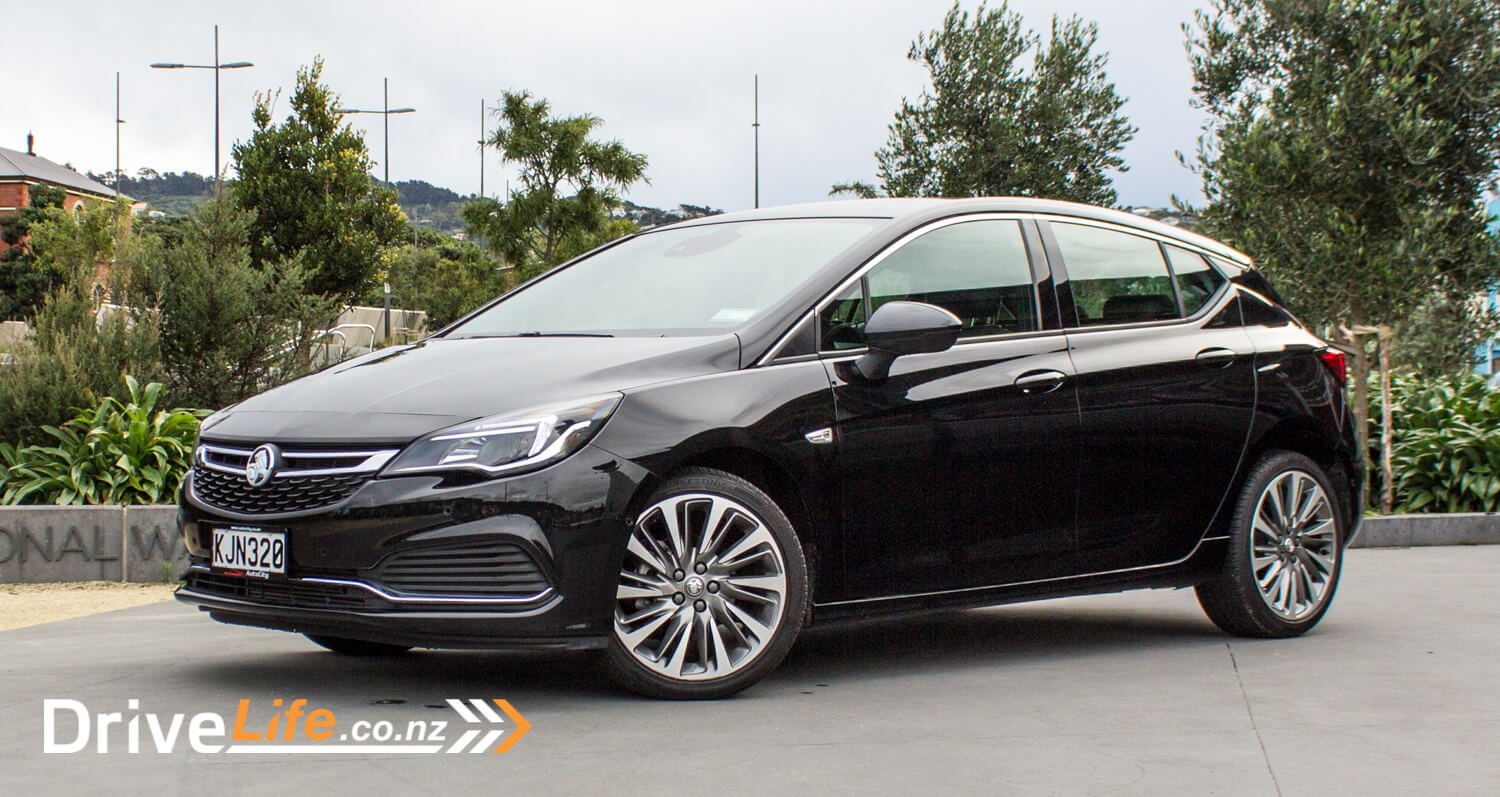So here we have it: the 2016 European Car of the Year (COTY) on test. Understandably, Holden is cashing in on the title and using it where they can. Who wouldn’t? But will this car’s European win translate to New Zealand roads and conditions?
Holden sent us one of the top-spec RS-V models to find out.
The Range
There’s less than $8,000 between the cheapest and most expensive model of 5-door Astra. Even more interesting is that all models come with a 6-speed manual gearbox as standard. Yes, manual gearboxes still exist in small/medium hatchbacks.
The Astra range comes in an R model (base) at $30,990, RS and then the RS-V (tested) at $38,490. Most models are 5-door hatchbacks, and there’s the single 3-door VRX at the top end for $49,990.
All models come with the HoldenEye camera system (insert your rude comment here). I’m not sure who picked the name for that, but it’s not ideal. Anyway, the HoldenEye system means that (depending on the model) you get things like Lane Departure Warning, Forward Collision Alert, Forward Looking Brake Assist and Automatic Emergency Braking.
Even that base R model is pretty well equipped – surprisingly so. That cheapest model comes with a 7” touchscreen using Holden’s MyLink system, leather steering wheel, auto wipers, auto-dipping rear view mirror, 17” alloys, rear parking sensors, trip computer, auto headlights, 6-speaker audio, LED DRLs, Apple CarPlay and Android Auto capability and six airbags. The R is equipped with a 1.4-litre turbo petrol engine, putting out 110Kw or power and a healthy 240Nm of torque.
For around $3k more, the RS then adds Blind Spot Alert, push-button start, heated and power folding mirrors, Advanced Park Assist (automatic parallel and angle parking), Lane Keep Assist and Lane Departure Warning.
In the 5-door hatch, the top range manual RS-V adds a lot more for just $6k over the base R manual. As well as all the above equipment, the RS-V also adds in 18” alloys, LED taillights, a 4.2” Driver Information Centre, remote start (automatic only), an 8” colour touchscreen, SatNav, leather seats, heated front seats, 4-way power lumbar adjust for both front seats, a heated steering wheel and dual-zone AC. For $6k more, that is excellent value.
Engine-wise, the RS and RS-V both come with a 1.6-litre turbo petrol motor, giving you 147Kw of power and 280Nm of torque.
At $49,990, the VXR comes with a 2-litre turbo motor giving you a nice 206Kw and 400Nm of torque. Now that car would fly. Showing its sporting intentions, the VXR is available only with a manual gearbox.
First Impressions
Our test car was in Mineral Black, and looked good. It’s not that different from other cars – no unique styling clues, really – but the whole design comes together nicely. It’s a shape that, when you come back to the car in a supermarket carpark, you still smile.
I get the feeling it will date quickly, but she’s a good looking car. Side on, it’s a sharp looking ride, especially when you take into the account the ‘floating’ roof above the blacked-out C pillar.
The high waistline on the rear doors does cut down interior light a bit. The only thing I found is that it can be mistaken very easily for a Golf or Corolla at the front. It just doesn’t seem to have its own identity.
The Inside
The first thing I thought when I sat down in the driver’s seat? I thought someone had replaced the seats with concrete blocks. These seats are HARD. They aren’t actually uncomfortable, but man are they hard. Everyone who got in the car instantly remarked on this.
Then I went to adjust the seat. I fiddled aimlessly for the electric seat controls. There are none? Then I found the lever at the front of the seat. Uh, this is the top of the range, but no power seats? The RS-V is well equipped – as is the whole range – but weirdly, not even the driver’s seat is powered.
You do get 4-way electric lumbar adjust so that’s something – and in fact, both front seats have electric lumbar adjust.
The centre console is really low, especially after the Escape I just handed back and the MX-5 before that. This one is way low, and this really makes the front of the car feel so much more spacious and airy. Yes it’s all black in here, but the low console is a saving grace.
I was glad to see that the euro Astra doesn’t have GM’s thumbwheel controls for cruise speed and volume adjust. Instead there are a couple of up/down toggles, and they work a treat. They have a really nice tactile feel to them, a world away from those fiddly thumbwheels. The other steering wheel controls are good, and included on the wheel are the up/down, left/right and Enter controls for the trip computer/driver’s information display.
One thing you won’t find on the steering wheel are any paddle shifters. Such a shame, I like using them for engine braking. The wheel itself is leather trimmed, and has a nice, quality feel to it.
The driver information display is crisp and clear, and you can pick from a multitude of options, like SatNav turn-by-turn directions, media playing, digital speed readout, and economy (multiple options). The only drawback with this display is with the SatNav: if you want the turn-by-turn directions to come up, you have to select it every time (or always leave it on). Other systems automatically switch to this when you set a destination. One bonus here though is the small red bar that shows up for your next turn; as you get closer, the bar gets shorter so you can easily judge by a quick glance how long it’s going to be before you have to turn. That’s a nice touch.
For the first time for me I think, once when I set a destination when in a private car park, I was told in no uncertain terms to ‘please drive on to a digitised road’. I felt offended, but complied.
I popped open the glovebox, and there was the hat-tip to Europe: an ashtray that slots into one of the drink holders. Hey, if you are a smoker, you will like that little extra feature I am sure.
As mentioned, everything is black in the cabin except for the pillars and headlining. This isn’t much different to other cars with black interiors, but in the Astra it does feel a bit more closed in, even with that low console. There’s a few bits of piano black here and there for a touch of class. And it does look nice in the cabin, just dark with it. Along with piano black, there are a few bits of stainless trim to help lighten it at least a bit.
The media, SatNav and phone are all driven by the MyLink system, and it works just fine. Minutes to pair your phone, and minutes to get the hang of the menus. No problems in this department at all. Thank you Holden for keeping it simple.
Rear legroom is very good, if not excellent. Rear seat comfort is on par with the front – hard, but comfort is ok.
The boot is reasonably spacious at 360 litres with the seats up. It’s a little shallow but quite long.
I did find it strange that you have to pay for the Touring Pack option with the RS-V to get adaptive cruise and electric sunroof. I had to double check I was in the top-spec model as I couldn’t seem to get the adaptive cruise to work (since it didn’t have it).
The Drive
Small capacity + turbo = great performance. The RS-V really has a nice engine. It’s not quite as quiet or smooth as Suzuki’s BoosterJet 1.4 (my benchmark for small turbo engines) but it does just fine. There is always an almost instant supply of torque and power, ready to go. There is a little lag, but you barely notice it.
The other thing with the power delivery is how linear it is. It reminds me of the new Toyota C-HR in that respect; just a smooth delivery, as you need it. It’s peppy around town, and mid-range acceleration is excellent too. This is a perfect engine for this car.
The 6-speed transmission I did have a few issues with during my week with the RS-V. Nothing major, but at times when accelerating out of a corner, it would take a bit of time to make up its mind what gear it wanted to choose. It also showed some signs of shunting on occasion, especially on a slow-speed down-shift.
What really got me – especially for the 2016 European Car of the Year – was the ever-present road noise. Coarse chip seal is the worst for this, as you would expect, but even on smooth roads there is always some road noise coming through. I’m not sure if it’s a sound-deadening thing or the tyres (Bridgestone Turanzas) or something else, but during my week with the car I kept writing in my notes, ‘road noise’. I spoke to someone else who test-drove an Astra with a view to buying one, and they said exactly the same thing – and they aren’t car people. Definitely an area for improvement, Holden.
One good thing about the new Astra is the ride – firm but compliant. The thing with the ride is that the handling is so good, it’s surprising that the ride is so good too. Do the chassis dynamics translate to New Zealand’s roads? Very much. I had a lot of fun with the Astra on my Favourite Handling Road – it sits relatively flat, there’s almost no tyre scrub and getting the tyres even to squeal takes a concerted effort. On tight corners, you can easily get the inside front wheel to lift and spin (and then grin).
The front end tracks nicely and goes exactly where you point it. Turn on Sport Mode for far better gear changes (and less hunting), and you get a little more feel through the steering wheel. Even accelerating around off-camber corners sees little drama. I did find that in Sport Mode and going downhill, the transmission seemed a little too eager to change up – flicking the trans into manual mode cured this.
Brakes are good – around town, or pushing along those twisty roads. Feel from the brakes is above average, and they certainly give you confidence. Those seats, while hard, do a reasonable job of holding you in place when those corners get tighter. Overall, this can be a fun, competent car on a twisty road.
In day-to-day driving, the RS-V does well. Blind Spot Monitoring is always welcome when commuting, and other than the road noise and lack of adaptive cruise, it’s an easy daily driver.
For the commuter, the Astra is inflicted with a worse case of auto-engine off than other cars. You may recall me complaining that in many cars that have an auto-engine off feature, when you put the electric park brake on for a long stop at the lights, the engine starts – totally pointless. However in most cars that do this, if you remember to shift the car into neutral first, the engine won’t start.
The Astra doesn’t take this approach – it goes one worse; you stop at the lights (or a stop sign) and the engine turns off. Fine. You put the park brake on, the engine starts (pointless). Or, you put the car into neutral first – the engine starts (pointless). I ended up turning the feature off as it just annoyed me. How hard can it be to keep the car’s engine off until you accelerate, just like it does if you keep your foot on the brake pedal?
One nice feature I spotted was the following distance time indicator. One of the driver’s display options is to show you how many seconds you are behind the car in front. This is great for learner drivers, or pretty much anyone. At times I thought I easily had two seconds of space, but was a good half-second too close.
I had the RS-V for a week and covered 600km in it. The manufacturer claims a combined fuel economy rating of 6.3L/100km. My figure was 7.8 which in the scheme of things, isn’t too bad.
The Competition
I was surprised how many 5-door hatchbacks are still available. The ever-present SUV hasn’t quite won yet. I’ve stuck to the top of the range models here that are 5-door hatchbacks, as that’s what the RS-V is.
One thing to note below – the highest power and torque figures go to the Astra RS-V.
| Brand / Model | Engine | Power, Kw/Torque, Nm | Fuel L/100km | 0-100km/h | Price Highest to Lowest |
| Mazda3 SP25 Limited | 2.5-litre DOHC petrol | 138/250 | 6.1 | 8.0 | $47,495 |
| Ford Focus Titanium | 1.5-litre DOHC turbo petrol | 132/240 | 6.9 | n/a | $46,480 |
| Skoda Octavia TSi Style | 1.8-litre DOHC turbo petrol | 132/250 | 5.8 | 7.4 | $41,890 |
| Kia Cerato LTD | 2.0-litre DOHC petrol | 112/192 | 7.1 | n/a | $39,990 |
| Holden Astra RS-V | 1.6-litre DOHC turbo petrol | 147/280 | 6.3 | 8.2 | $38,490 |
| Toyota Corolla Hybrid | 1.8-litre DOHC petrol/hybrid | 73/142 | 4.1 | 10.9 | $38,490 |
| Mitsubishi Lancer GSR | 2.0-litre DOHC petrol | 109/197 | 7.2 | n/a | $32,990 |
| Subaru Impreza Sport | 2.0-litre DOHC petrol | 115/196 | 6.6 | 11.1 | $29,990 |
The Pros and Cons
| Pros | Cons |
|
|
What do we think of it?
I believe any buyer of an Astra RS-V would be happy. The engine is excellent, it’s spacious and a great drive. Equipment levels are very good for the money. It rides well and handling is a welcome surprise.
But the road noise was so evident for me. I got used to it, but someone new jumping in the car would always remark on it once moving.
I had just dropped off a Ford Escape before picking up the Astra – when I came to rate the Escape, I really struggled with what to give it. It is exactly the same issue with the Astra; it has some great points, and other not-so-great points. That engine-off design drove me nuts.
In the end, the ‘list’ of things I didn’t like are minimal, so I’ve decided on a 4.0 Chevron rating. I started off saying that I thought any RS-V buyer would be happy – and I believe they would.
That’s got to be worth 4.0 Chevrons.
| Vehicle Type | FWD, 5-door small/medium hatchback |
| Starting Price | $30,990 |
| Tested Price | $38,490 |
| Engine | 1.6-litre DOHC turbo |
| Transmission | 6-speed automatic |
| 0 – 100 kph, seconds | 8.2 |
| Kerb Weight, Kg | 1363 |
| Length x Width x Height, mm | 4386 x 2042 x 1485 |
| Cargo Capacity, litres | 360 |
| Fuel Tank, litres | 48 |
| Fuel Efficiency | Stated Combined: 6.3L/100km
Real World: 7.8L/100km |
| ANCAP Safety Ratings | 5 Star |
| Warranty | 3 years, 100,000km |


